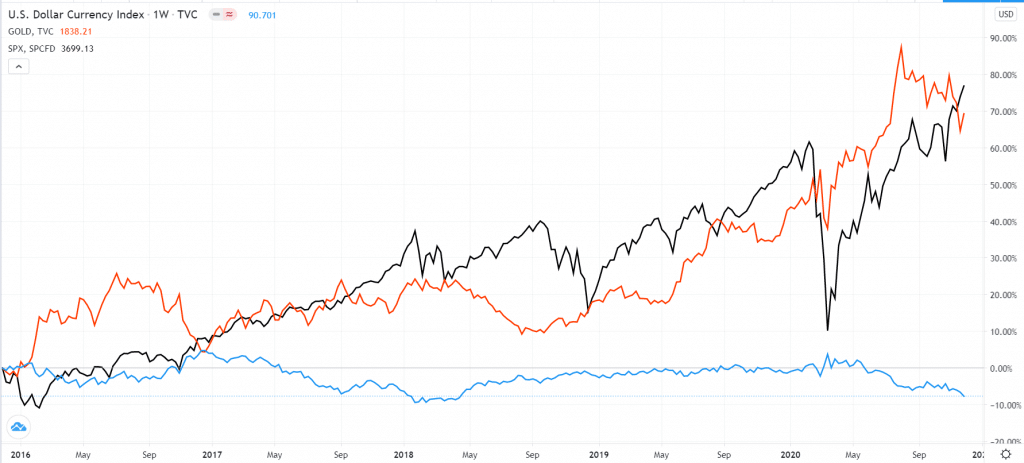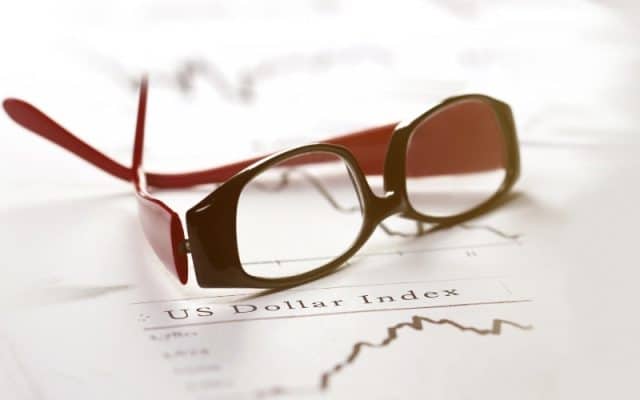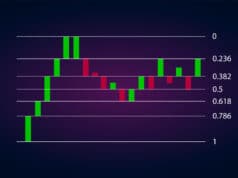The US dollar index (DXY) is an important asset in the financial market. Started by the Federal Reserve in 1973, the index is used to track the overall changes in the value of the greenback. In most cases, when you hear media commentators talk about the dollar rising or falling, they are usually referring to the DXY. In this article, we will look at what the dollar index is in forex and how you can invest in or trade it.
What is the dollar index?
The dollar index is a financial benchmark that attempts to identify the relative value of the greenback. It does this by comparing the dollar’s value against the other six major currencies. The index came to life in 1973 after President Richard Nixon abandoned the gold standard. For starters, this standard meant that each dollar was equivalent to a piece of gold. As such, the index was created to establish the true value of the dollar.
US dollar constituents
In general, an index is made up of several assets that come with different weighting. For example, the S&P 500 is made up of the biggest 500 companies in the US. These companies are not the same in the index because of their different characteristics. For example, a big company like Apple usually carries more weight than a smaller firm like Restaurant Brands. Similarly, the dollar index is made up of 6 currencies that have different weighting:
- Euro. This is the biggest constituent of the dollar index. It represents about 57% of the index.
- Japanese yen. This is the second-biggest constituent of the index representing 13.6% of the index.
- British pound. The sterling represents about 11.9% of the DXY.
- Canadian dollar. It provides a 9.10% weighting to the dollar index.
- Swedish krona. It represents 4.20% of the dollar index.
- Swiss franc. It has a 3.20% weighting.
Therefore, because of the euro’s weighting, its price tends to move in a similar direction to the dollar index, as shown below. This is one of the major limitations of the dollar index.
USD/EUR vs. US dollar index

The next key limitation is that the index does not represent the overall situation in the world today. For one, its constituent currencies have not changed since the 1970s. But the world has changed. For example, China has become a superpower, and the yuan is among the most commonly used currencies in trade. Similarly, the index does not include any other emerging market currencies like the Mexican peso, Indian rupee, and Russian ruble.
What moves the dollar index?
There are several top reasons why the dollar index rises and falls regularly. Some of these reasons are:
- Global risks. Because of the dollar’s role as the reserve currency of the world, it tends to rise when global risks rise. For example, it rose sharply when the World Bank declared coronavirus a global pandemic.
- Monetary policy. The dollar index reacts to monetary policy mostly by the Federal Reserve and the European Central Bank.
- Economic data. Important economic numbers like the nonfarm payroll, manufacturing & services PMIs, and inflation can move the dollar index.
- Technical factors. Like all financial assets, the index is usually affected by technical factors like overbought and oversold situations.
How to trade the US dollar index
The dollar index is offered by most online brokerage companies in the form of contracts-for-difference (CFD). A CFD is simply a product that tracks the price of the main asset. Therefore, if you are interested in trading the index, ensure that it is provided by your broker.
Like all financial assets, there are several strategies you can use to trade the dollar index. A common approach is known as arbitrage. While the name sounds complex, the concept is relatively simple.
Arbitrage is a strategy where you trade two financial assets simultaneously with the goal of profiting from the spread. In this case, you can combine the dollar index and the EUR/USD pair. Ideally, if the dollar index rises, you would expect the EUR/USD to fall.
As such, if you believe that the dollar will rise, you can buy the dollar index and mitigate the downside risk by buying the EUR/USD. In this case, if the dollar rises, you will make a bigger profit on the DXY trade and a loss on the EUR/USD trade. Your total profit will be the difference between profit and loss.
Fortunately, there are other assets that have a direct and inverse relationship with the dollar index. For example, the dollar index has an inverse relationship with most commodities that are priced in dollars like gold, silver, and copper.
Similarly, it tends to have an inverse relationship with US indices like the S&P 500 and the Dow Jones. The chart below shows that the dollar index has fallen by 8% in the past five years, while the S&P 500 and gold have rallied.
Dollar index vs. S&P 500 and Dow Jones

There are other ways of trading the dollar index, including:
- Scalping. This is a strategy that involves buying and selling the index within a short period at a profit.
- Trend following. This is the process of buying the index when it is rising and selling it when it’s falling.
- Algorithmic trading. This is a strategy that involves using robots and algorithms to implement trades.
- Swing trading. This is a trading strategy of buying or shorting the index for a few days.
What about the dollar index ETFs?
For American traders who cannot access CFDs, there is another option of trading or investing in the dollar index; ETFs. There are those exchange-traded funds that track the index. The most popular ones are the Invesco DB US Dollar Index Bullish Fund (UUP) and the WisdomTree Bloomberg U.S. Dollar Bullish Fund (USDU). The two ETFs are provided by all brokers, including the popular Robinhood.
US dollar index and the USDU and UUP move in the same direction.

Summary
The US dollar index is an important financial asset that you will always encounter in the financial market. Indeed, it is written about in financial media almost every day. In this article, we have looked at what it is, its key constituents, and how you can trade it.




